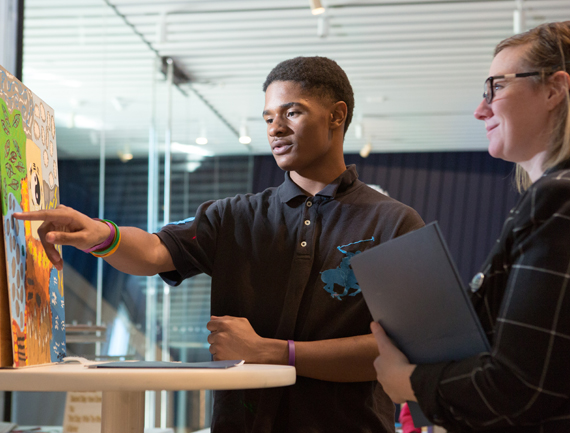
An Educator’s Social and Emotional Learning Journey
By Frank McCulloch
As a long-time educator, teacher and administrator, I have always instinctively understood the importance of social and emotional support. But as my career progresses, I continue to learn more.
Early in my career, as an elementary school reading interventionist, I naturally incorporated the expressive arts—music, theatre, painting and sculpting, creative writing—into my literacy lessons. And as a result, I witnessed both my students’ academic growth and the creation of a vibrant and fun class environment; the kids appeared interested and engaged in my lessons and I believe this largely had to do with the opportunity for them to creatively express themselves. These activities also fostered deeper “human” connections between us. To engage in the expressive arts often requires personal introspection and self-reflection. And when we share our reflections with others we often create deeper connections.
As a middle school literacy interventionist, I focused my classes on narrative writing, and my students’ first person, non-fiction memoirs and vignettes provided me with fascinating—and sometimes heartbreaking—snapshots of their outside-of-school experiences and inner worlds. These insights gave me invaluable perspectives and understandings of my students, while fostering empathy and social and emotional development in my classroom. However, I learned that creating a safe and trusting environment is absolutely essential if students are going to take such emotional and creative risks. Creating that environment is crucial to strong social and emotional learning.
I was teaching 10th grade Humanities at Amy Biehl High School when Larry Myatt, former principal and consultant, shared with our entire staff that student academic achievement must be matched by equally high levels of social and emotional support. This same message was reinforced by Joel Nostroff, former Director of Freshman Studies at the University of New Mexico, when he presented on the direct correlation between post-secondary persistence and success and access to a caring, on-campus adult.
I’ve seen this happen firsthand. As the current Principal of Amy Biehl High School, social and emotional learning is core to our school’s culture and structure. We are a small school by design to foster intentional relationship building with a focus on interpersonal skill building, adult/child mentorships and personalization. And I’ve seen the benefits of these efforts, with 96% of our students applying to and attending college. Our student population is diverse with over half our students classified as economically disadvantaged, 67% minority, 28% special education and anywhere between 30 – 70% first generation college students. Because of these statistics ABHS has been acknowledged as closing the achievement gap. And I recognize the crucial role that social and emotional learning and support plays in this success.
In closing, I recognize what I’ve learned about social and emotional learning: That the creative, expressive arts are a potential catalyst for social and emotional learning and tap in to deep wells within and between each other; that in order for social and emotional learning to thrive, we must create safe environments for students; and to fully embrace diversity and equity in education we must pay equal attention to academic and social and emotional learning and support. And as I continue to work to support students, I look forward to learning more.
Photo courtesy of Allison Shelley/The Verbatim Agency for American Education: Images of Teachers and Students in Action

